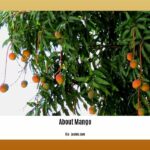From Palm to Plate: Exploring the Coconut’s Journey
The coconut ( Cocos nucifera ), a ubiquitous symbol of tropical paradise, is more than just a pretty face. Often misclassified as a nut, this versatile drupe—a fruit with a hard shell enclosing a seed—offers a wealth of culinary and practical applications. From the refreshing water within its young green husk to the rich, creamy flesh of its mature brown counterpart, the coconut provides a diverse range of ingredients, including coconut milk, oil, desiccated coconut, and flour. Its influence stretches beyond the kitchen, finding its way into cosmetics, textiles, and even building materials. This journey starts with understanding the coconut’s unique botanical classification and the remarkable versatility it offers.
A Global Commodity: Production, Allergies, and Sustainability Concerns
The coconut palm thrives in tropical climates, with Indonesia, India, and the Philippines leading global production. This distribution reflects the historical significance of the coconut, notably its spread by Austronesian sailors across the Indian and Pacific Oceans. While coconuts contribute significantly to the economies of producing countries, the industry faces crucial sustainability and health challenges. Large-scale monoculture farming practices raise environmental concerns, including habitat loss, soil degradation, and water pollution. Additionally, despite its fruit classification, coconut is recognized as a major tree nut allergen by the FDA, posing a risk for individuals with sensitivities and highlighting the importance of accurate labeling and consumer awareness. Addressing these issues requires a multifaceted approach.
Charting a Sustainable Course: Protecting Ecosystems and Empowering Communities
Ensuring the longevity of the coconut industry necessitates a shift towards sustainable practices. These encompass not only environmental protection but also the economic well-being of the farmers and communities who cultivate this vital crop. Eco-conscious farming methods are essential to minimize environmental impact, while fair trade practices ensure equitable compensation and empower local communities. This involves a commitment to responsible resource management, biodiversity conservation, and waste reduction.
Key Pillars of Sustainable Coconut Production:
- Agroforestry and Diversification: Integrating coconut palms into diverse agricultural systems, rather than relying on monocultures, enhances biodiversity, improves soil health, and minimizes reliance on harmful pesticides. This can include intercropping with other beneficial plants like bananas, cocoa, or spices.
- Integrated Pest and Disease Management: Implementing preventative measures like biological control, crop rotation, and resistant coconut varieties minimizes the need for chemical pesticides, protecting both the environment and human health. Investing in research to identify and address emerging diseases is also crucial.
- Climate Change Resilience: Developing and promoting climate-resilient coconut varieties is vital for adapting to changing weather patterns. This includes research on drought-tolerant and salt-resistant cultivars. Improving water management practices also contributes to resilience.
- Empowering Coconut Farmers: Supporting smallholder farmers through fair pricing, access to training and resources, and market access improves livelihoods, encourages sustainable practices, and strengthens the overall industry. This also includes promoting cooperatives and farmer-owned businesses.
- Transparency and Traceability: Implementing transparent supply chains allows consumers to make informed choices, supporting ethical and sustainable coconut production. Certifications and labels can help consumers identify products that meet specific sustainability criteria.
- Allergy Management and Education: Clear and accurate labeling of coconut products is paramount to protect those with allergies. Public awareness campaigns can educate consumers about the potential risks and cross-reactivity with other tree nuts.
The Future of Coconut: Innovation and Collaboration
The future of coconut lies in a balanced approach that acknowledges both its immense potential and the crucial need for responsible practices. By prioritizing sustainability, empowering communities, and fostering innovation, we can ensure the long-term health of the coconut industry while safeguarding our planet. Continued research into coconut’s nutritional and medicinal properties also promises to unlock further benefits, solidifying its place as a valuable resource for generations to come. This requires collaboration among stakeholders, including farmers, researchers, businesses, and consumers, to create a truly sustainable and equitable coconut industry.
- Jesus Bible: Discover Jesus’s Story Throughout Scripture - April 27, 2025
- Don Luis: Unraveling the 16th-Century Virginia Mystery - April 27, 2025
- Captain J’s Kauai Tours: Unforgettable Na Pali Coast Adventures - April 27, 2025
















